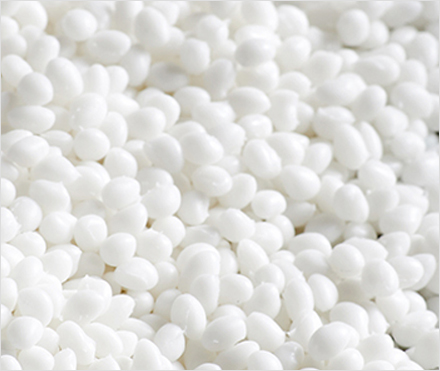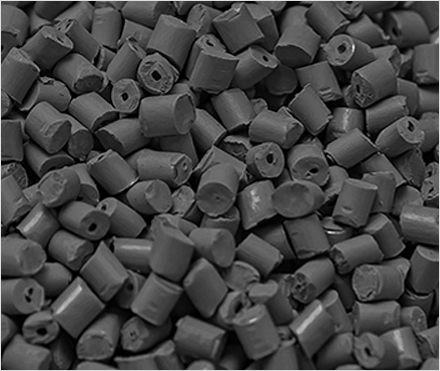In today's material science landscape, understanding the properties and applications of various polymers is essential for numerous industries. Among these, Thermoplastic Elastomers (TPE) have garnered significant attention due to their unique characteristics and versatility. In this blog, we will explore what TPE is, what it's made of, and compare it with another similar material, TPU.
Thermoplastic Elastomers (TPE) are a class of copolymers or a physical mix of polymers (usually a plastic and a rubber) that consist of materials with both thermoplastic and elastomeric properties. Essentially, TPEs combine the processing advantages of plastics with the flexibility and durability of rubbers.
The unique feature of TPEs is their ability to be molded, extruded, and reused like plastics while retaining the elastic properties of rubber. This makes them highly desirable in a variety of applications, from automotive parts and medical devices to consumer goods and sports equipment.
TPE materials are composed of a mixture of polymers, usually a combination of plastic and rubber. This mixture can vary, but typically includes:
Styrenic block copolymers (SBCs): These are often used in consumer goods and packaging due to their flexibility and ease of processing.
Thermoplastic polyolefins (TPOs): Commonly used in automotive applications for their toughness and resistance to chemicals.
Thermoplastic vulcanizates (TPVs): These are highly durable and are used in applications requiring heat and oil resistance.
Thermoplastic polyurethanes (TPUs): Known for their excellent abrasion resistance and elasticity, making them ideal for footwear and technical parts.
The process of creating TPE involves blending these polymers to achieve the desired balance of mechanical properties, temperature resistance, and elasticity. The result is a material that can be easily shaped into a variety of forms while maintaining a rubber-like flexibility.
While TPE and TPU compound share some similarities, they are distinct materials with unique properties and applications. Here’s a detailed comparison:
TPE: As mentioned, TPE is a blend of rubber and plastic, providing a wide range of hardness and elasticity. The exact composition can be tailored to meet specific needs, making TPE a versatile choice for various applications.
TPU: TPU compound is a specific type of TPE that is made from thermoplastic polyurethane. It is characterized by its excellent abrasion resistance, high elasticity, and superior strength.

Matte TPU made by ATP Polymer
Flexibility: Both TPE and TPU are flexible, but TPU tends to offer greater elasticity and can return to its original shape better after deformation.
Durability: TPU is generally more durable and resistant to abrasion, making it suitable for more demanding applications such as industrial hoses, conveyor belts, and protective cases.
Chemical Resistance: TPU typically has better resistance to oils, greases, and solvents compared to other TPEs, enhancing its usability in harsh environments.
Processing: TPE for sale can be processed using conventional plastic manufacturing techniques such as injection molding and extrusion. TPU can also be processed similarly but may require more precise control due to its specific properties.

Foaming Ocean TPEs made by ATP Polymer
TPE: Widely used in automotive parts (e.g., gaskets, seals), consumer goods (e.g., toothbrushes, razors), and medical devices (e.g., tubing, grips).
TPU: Preferred for applications needing superior durability and flexibility, including footwear, phone cases, sports equipment, and industrial components.
| Feature/Property | TPE (Thermoplastic Elastomers) | TPU (Thermoplastic Polyurethane) |
| Composition | Blend of rubber and plastic | Thermoplastic polyurethane |
| Elasticity | High, but generally less than TPU | Excellent, high elasticity and return to original shape |
| Durability | Good, suitable for a variety of applications | Excellent, superior abrasion resistance and toughness |
| Chemical Resistance | Moderate, varies with composition | High, excellent resistance to oils, greases, and solvents |
| Flexibility | Flexible, varying levels based on blend | Very flexible, superior to many other TPEs |
| Processing | Easy to process using conventional plastic techniques | Can be processed similarly, but requires precise control |
| Hardness Range | Wide range, from soft and flexible to rigid | Broad range, but typically more focused on flexibility |
| Temperature Resistance | Moderate to high, depending on specific TPE blend | Generally high, performs well in a wide temperature range |
| Applications | Automotive parts, consumer goods, medical devices, sports equipment | Footwear, phone cases, sports equipment, industrial components |
| Cost | Generally lower than TPU | Typically higher due to enhanced properties |
| Abrasion Resistance | Good, sufficient for most applications | Excellent, ideal for high-wear applications |
Thermoplastic Elastomers (TPE) are a versatile group of materials that bridge the gap between plastics and rubbers, offering the best of both worlds. While TPE itself is a broad category, Thermoplastic Polyurethane (TPU) stands out as a specific type with enhanced properties. Understanding the differences between TPE and TPU is crucial for selecting the right material for your specific application needs.
Whether you are in the automotive, medical, consumer goods, or industrial sector, TPE and TPU provide innovative solutions that enhance product performance and durability. As material science advances, the applications and capabilities of these remarkable polymers will continue to expand, driving innovation across various industries.
